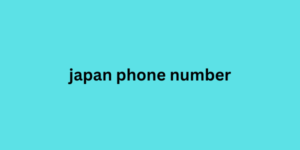Identification of the target audience (TA)
For clarity, take an interest, for japan phone number example, in the strategies for creating and promoting existing modern digital products. It turns out that there is something surprising here, because two interesting points are striking. First, the initial calculation was for a very narrow consumer circle. Second, these products solved problems that were simply impossible to cope with in other ways.
Identifying the target audience
Below are some recommendations on how to correctly identify your target audience:

Create a portrait of an ideal buyer. It would be good if you yourself belong to the target audience, or, for example, someone from the company's team. For example, the corporate messenger Slack (which has already become a top one) at one time appeared as an internal product necessary to ensure effective communication between the company's engineers. Slack employees still test some of its new features on themselves first, and only then release them to the public. And the prototype of the Amazon cloud service was the infrastructure originally created to service the online trading platform of the same name.
Get information through interviews. This is the best way to learn about the client's problems, so that you can then offer solutions in the idea of your product or service.
Create a portrait of your ideal consumer. This is something like a resume, where the most complete information about the client is collected: gender, age, field of activity, income, hobbies, preferences and much more, which will allow you to understand how the potential buyer views the world and what he expects from your company and the product offered.
So, you have figured out who your potential customer is. The next step is to find out if there are actually such people in the market, and if so, how many are there?
Case: VT-metall
Find out how we reduced the cost of attracting an application by 13 times for a metalworking company in Moscow
Find out how
Conducting market analysis
There are different ways to assess the capacity of a segment. Among them, there are two main ones, the combination of which will allow you to collect the most accurate information:
Top-down market analysis. Collect data from Google statistics and other publicly available sources. This could be government statistics, competitors' marketing research, Wikipedia articles, annual public reports, etc. Using this information, you first create a picture of the overall purchasing power of the audience, then identify the segment you are interested in, then select your ideal customers from it and evaluate this indicator specifically for them.
Try to approach the issue as realistically as possible, estimate what profit they can bring you (remember that someone will buy from competitors too).
Bottom-up market analysis. Here you start to act "from below", that is, carefully study your real clients. First, figure out how much income they can bring you now, and then estimate how many more similar people might need your product. If it turns out that many, then you are building the product positioning strategy correctly.